Koni Installation Instructions
By Nick Chrimes, BaySHO Performance
Introduction
This document discusses the various struts that were available for the 89-95 SHOs, their design differences, and which are most suitable for Koni inserts. It also includes instructions for Koni installation into these struts.
A note on part and casting numbers: a part number is what Ford uses to sell a part. A casting number is physically put onto the strut by the factory, and won't always be the same as the part number.
Strut Design
The basic differences are strut top design, length of body and width of body. Also valving, although that is outside the scope of this document.
Strut Tops
There are two types of strut tops - the bottle neck design and the zinc hat design. The zinc hat design is a constant diameter all the way to the top, while the bottle neck design, well, bottle necks down at the top, forcing you to cut that whole section off (26mm). This may leave the insert seating ring [partially] above the housing once assembled, especially if too much is cut off. This can cause the insert to rattle over time.
So the zinc hat design is preferable, although people have had success with the bottle design.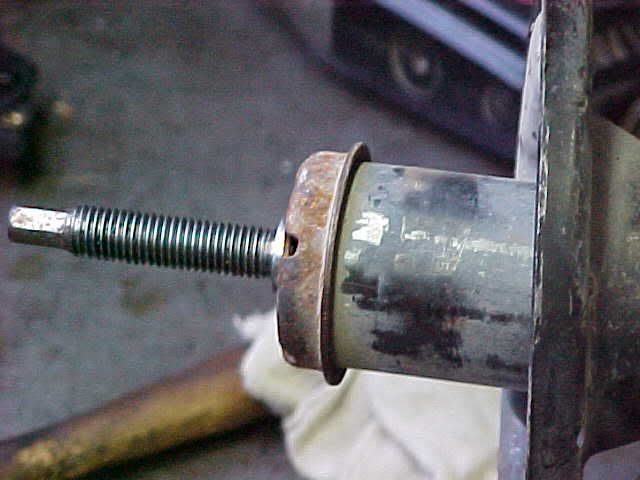
Zinc Hat Design
Body Length
The fronts are all the same length.
The rears come in two lengths. Some struts project 2 1/4" below the pinch bolt center line, some project 4" below. The longer ones are more desirable, although more difficult to install as they project further below the knuckle. Either will work, however.
Note that Koni also made a short and long insert, so it's important that the inserts you get match the housings you intend for them. Unknown if the longer Konis have a longer travel.
Koni part numbers
89-95 Front............... 8641-1287
89-5/92 Rear 'Long'.... 8641-1288
6/92-95 Rear 'Short'... 8641-1323
Body Top/Width/Length Table
The base of the struts are 2" dia. front and rear, but some years have a middle section diameter of up to 2.08". The narrow body is preferred to minimize the possibility of rattles.
Struts by year, the most desirable ones in Bold:
| Year/Transmission | Front Strut | Rear Strut | |||
|---|---|---|---|---|---|
| Top | Width | Top | Length | Width | |
| 89 MTX | Bottle Neck | Narrow | Bottle Neck | Long | Narrow |
| 90 MTX | Bottle Neck | Narrow | Bottle Neck | Long | Narrow |
| 91 MTX | Zinc Hat | Narrow | Zinc Hat | Long | Narrow |
| 1/92 - 5/92 MTX | Zinc Hat | Narrow | Zinc Hat | Long | Narrow |
| 6/92 - 12/92 MTX | Zinc Hat | Narrow | Zinc Hat | Short | Narrow |
| 93 MTX | Zinc Hat | Wide | Zinc Hat | Short * | Wide |
| 94 MTX | Zinc Hat | Wide | Zinc Hat | Short * | Wide |
| 95 MTX | Zinc Hat | Wide | Zinc Hat | Short * | Wide |
| 93 ATX | Zinc Hat | Wide | Zinc Hat | Long | Wide |
| 94 ATX | Zinc Hat | Wide | Zinc Hat | Long | Wide |
| 95 ATX | Zinc Hat | Wide | Zinc Hat | Long | Wide |
* - There have been instances of '93 and '94 MTXs having long rear struts. One can only assume that the factory put on whatever they had available at the time, just like they did with the rear sway bars. In this case, ATX struts on MTX cars.
Koni Installation Instructions
- Drill a 1/8" drain hole in the bottom of the housing and pump out the oil by moving shaft. Make sure that this hole is dead center.
- If you are working with housings that have the zinc top hat, hammer off the zinc cap.
If you are working with bottle necks, skip this step.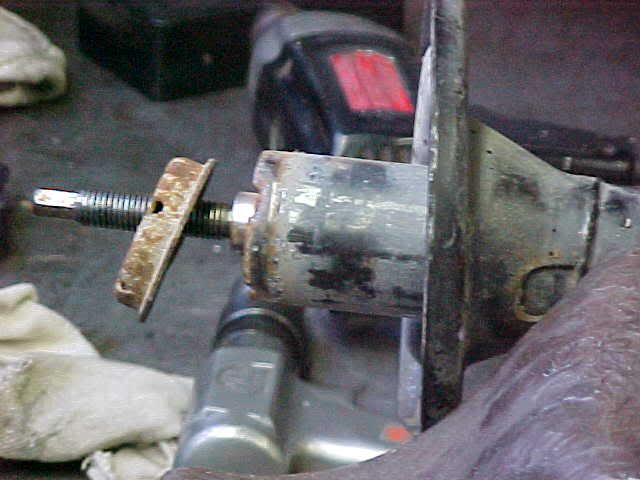
- Using a Pipe Cutter, cut open just (and I mean just) below the dimples. A hacksaw will work in a pinch, but make sure that your cuts are square.
If you are working with bottle necks, cut off the old housing just below the weld where the strut bottle necks. Approx. 26mm from the top of the housing.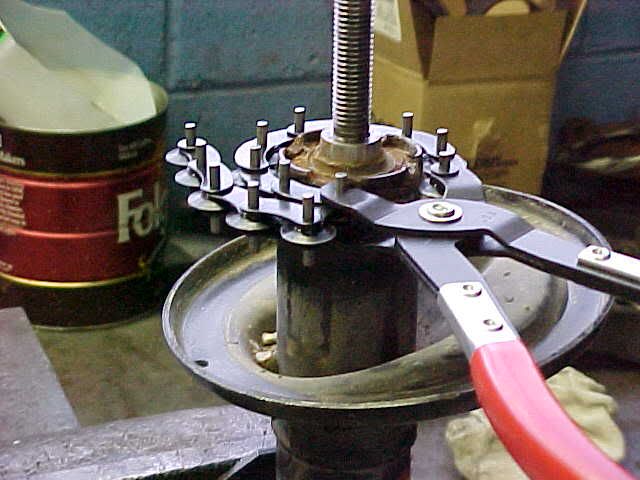
- When the tool breaks through the side wall you'll expose the side of the blue seal (zinc hat). Stop there and take it apart by hand. Pull HARD on it to get it out!
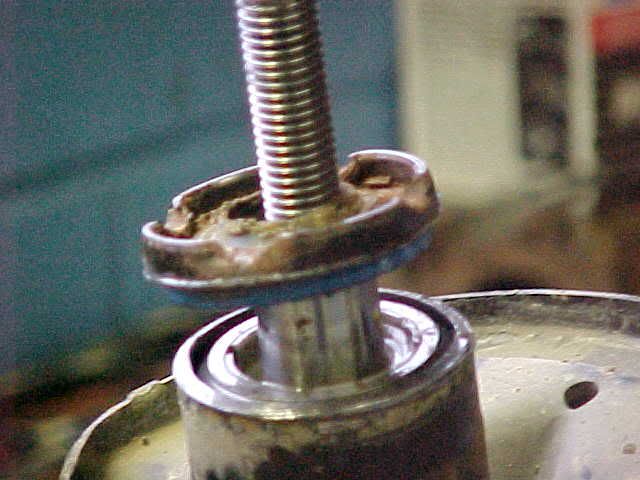
- Drill bottom hole out to 1/2". Debur top and bottom. Thoroughly clean out the inside of the housing.
Install the KONI insert into the housing and screw in the bottom holding bolt. Use Loctite on the bolt. Torque to 63 ft. lbs. Insert will be darn near flush with the cut line by fitting the knurl into the housing this way. Install the rubber boot and the plastic ring that come with the inserts. Keep the exposed metal shaft of the insert as clean as possible during this process.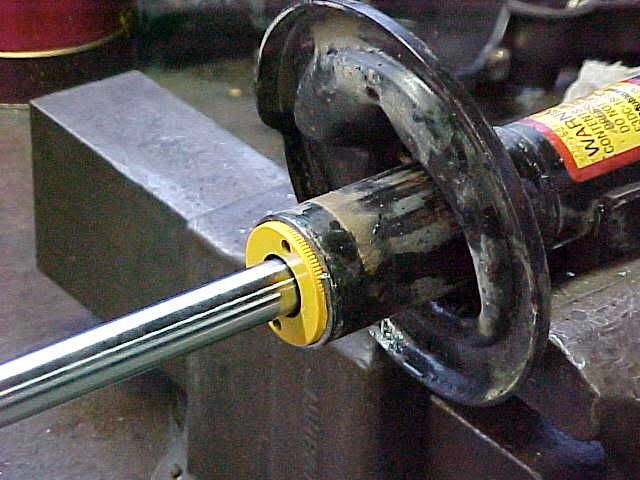
- Thoroughly clean the insert shaft with a suitable solvent such as lacquer thinner. Install the original bump stop about 1/2" below the top of the rod, tapered end down. If you are lowering the car with Eibachs, you might want to trim 1/2" off the narrow end of the bump stop to offset the decrease in travel. Install the original rubber bellows over the shaft. The strut is now ready for the spring to be installed.